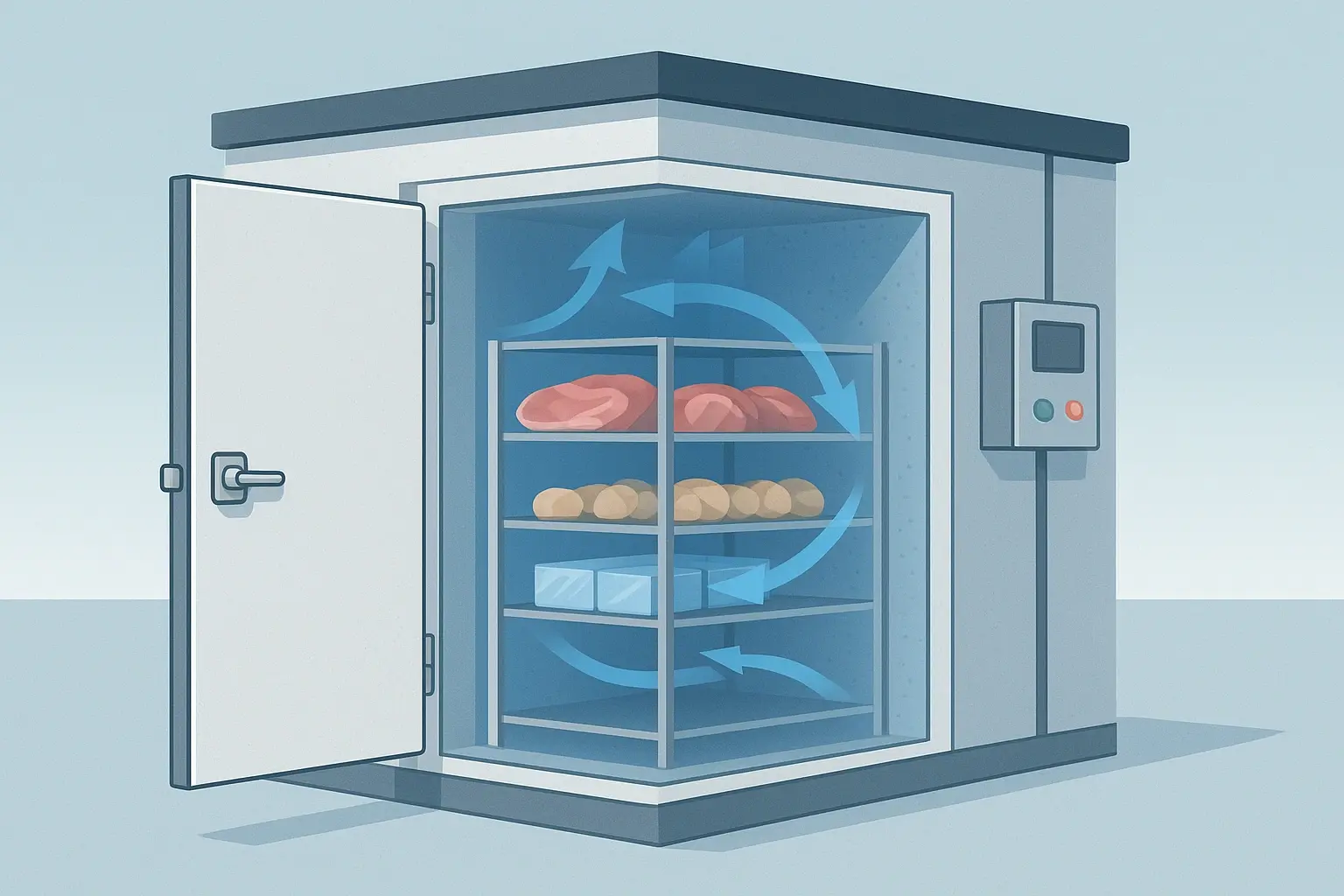The rapid growth of global food trade has made it essential to transport products over long distances while maintaining their freshness and quality. In this context, blast freezer technology has become an indispensable solution for food producers, especially those engaged in exports. Blast freezers enable products to be frozen in a very short time, ensuring both food safety and a strong competitive advantage.
What is a Blast Freezer and How Does it Work?
Blast freezers operate between –35°C and –45°C, using high-speed cold air circulation to freeze products quickly. This rapid freezing process allows water in the food to form microscopic ice crystals, preventing cell damage and preserving the texture, flavor, and nutritional value after thawing.
The operating process includes:
-
Pre-Cooling – Bringing the chamber to the target temperature.
-
Loading – Placing products on racks or trolleys.
-
Rapid Air Circulation – High-speed fans ensure even cooling across all surfaces.
-
Core Temperature Control – Lowering the core temperature to –18°C.
Importance for Food Safety
One of the most critical aspects of food safety is preventing the growth of bacteria and microorganisms. Blast freezing minimizes the time products spend in the danger zone (5°C–60°C), thereby:
-
Preventing the growth of pathogens like Salmonella and Listeria.
-
Retaining nutritional value.
-
Extending shelf life for months or even years.
Strategic Advantage in Export
For exporting companies, blast freezers provide three main benefits:
-
Quality Assurance: Many importing countries require products to be “quick frozen.”
-
Transport Flexibility: Reduces the risk of thawing during sea, air, or land transportation.
-
Market Expansion: Enables access to distant markets by exporting frozen products instead of fresh ones.
Industrial Design and Efficiency
Modern blast freezers are equipped with high-insulation panels, energy-efficient compressors, and automatic defrost systems. With sensor-based control systems:
-
Energy consumption is optimized.
-
Automation minimizes human error.
-
Compliance with food safety standards such as HACCP and ISO 22000 becomes easier.
The Future Direction
To reduce the carbon footprint in the food industry, next-generation blast freezers increasingly feature:
-
Natural refrigerants (CO₂, ammonia)
-
Heat recovery systems to boost energy efficiency.
-
IoT integration for remote temperature and humidity monitoring.
Blast freezer technology is not just about freezing—it is a key element of food safety, export capacity, and brand value. A well-designed and properly managed blast freezer system ensures benefits for both producers and consumers.

